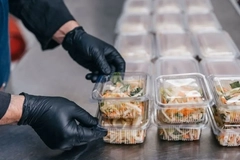PreZero warns “whataboutism” stalls climate-responsible packaging innovation
Key takeaways
- PreZero argues that “whataboutism” in environmental sustainability debates “paralyzes” packaging innovation and delays EU 2030 goals.
- Deflective arguments and cherry-picking metrics can foster confusion and erode consumer trust.
- The consultancy calls for science-based frameworks and pre-competitive collaboration to counter misinformation and build long-term progress.

“Whataboutism” in the packaging industry can lead to a decline in consumer trust in brands by creating mixed messages and making adoption of sustainable solutions harder, according to Alexander Reitz, head of Consulting and Development at German recycling company, PreZero.
Reitz tells Packaging Insights that whataboutism affects the adoption of environmentally sustainable packaging, warning it can “paralyze” innovation by casting doubt on new solutions.
He offers solutions for packaging companies and designers to avoid the trap of whataboutism when marketing a new product.
How does whataboutism impact sustainable packaging innovation?
Reitz: The primary impact of whataboutism is that it paralyzes the adoption of innovation. With the industry facing massive investment decisions driven by the EU’s Packaging and Packaging Waste Regulation (PPWR), whataboutism creates a fog of uncertainty that can delay the improvements needed to meet the 2030 targets.
It fosters a “perfect is the enemy of the good” mindset, causing companies to stick with a flawed status quo because a new solution is portrayed as having problems.
Another major impact is confusion for customers. Consumers lose trust and become cynical when every benefit is met with a counter-argument, making it harder for sustainable products to gain traction.
What are some examples of whataboutism in sustainable packaging?
Reitz: Firstly, there’s the “What about this other metric?” tactic. This deflects from a proven benefit by pointing to a different impact category to create doubt. For example, using recycled plastics or alternative fibers has massive environmental benefits.
.webp) The practical benefit of packaging innovation is often overlooked until a larger systemic change happens, argues Reitz.Attacking recycled plastic packaging with unrelated littering issues or cherry-picking metrics like eutrophication for Silphie to slow their adoption is a barrier to progress.
The practical benefit of packaging innovation is often overlooked until a larger systemic change happens, argues Reitz.Attacking recycled plastic packaging with unrelated littering issues or cherry-picking metrics like eutrophication for Silphie to slow their adoption is a barrier to progress.
Secondly is the “What about the bigger system?” argument. This dismisses a practical benefit by claiming it’s insignificant until a larger systemic change happens. One example is the debate around fresh produce packaging, which is central to the PPWR.
Data on cucumbers show a clear scientific case for using a thin film to prevent food waste. System-change whataboutism responses are: “Why don’t supermarkets sell other cucumbers with a thicker skin and inherently better shelf life?” or “Just eat pickles”.
How can focus remain on tangible solutions?
Reitz: The most critical, but probably also the hardest, step is to decouple strategy from being marketing-driven. Sustainability claims are powerful marketing tools, and a new story can be a great co-benefit that speeds up the adoption of a genuinely better solution. The danger is when the decision-making process becomes too marketing-led. This creates an incentive to cherry-pick the single most favorable data point for a campaign, and that cherry-picking is the precursor to whataboutism.
A solution is committing to holistic, science-based frameworks, in the EU’s Product Environmental Footprint (PEF), which evaluates up to 16 impact categories. A brand is forced to look at the whole picture.
Relying on a single metric to guide an investment is risky, especially with the systemic changes demanded by the PPWR.
Good leaders are transparent about known variables. For instance, openly stating that a package’s recyclability score changes depending on the country it’s sold in. That level of honesty builds long-term brand equity and de-risks future compliance, making it a smarter business strategy than any short-term marketing win.
What role does consumer perception play in perpetuating whataboutism in the packaging industry?
Reitz: Consumer perception’s craving for simple narratives makes it vulnerable to whataboutism. Brands need a disciplined process to communicate benefits without falling into the cherry-picking trap.
.webp) Reitz says that sustainability claims are powerful marketing tools but there is a risk that decisions becomes marketing-led.The first step is to validate holistically. A brand must use a comprehensive framework like the EU’s PEF to prove its packaging choice is a genuine, overall win. This level of scientific rigor is no longer optional. It’s a legal prerequisite driven by new EU rules like the Empowering Consumers for the Green Transition Directive.
Reitz says that sustainability claims are powerful marketing tools but there is a risk that decisions becomes marketing-led.The first step is to validate holistically. A brand must use a comprehensive framework like the EU’s PEF to prove its packaging choice is a genuine, overall win. This level of scientific rigor is no longer optional. It’s a legal prerequisite driven by new EU rules like the Empowering Consumers for the Green Transition Directive.
The second step is to translate responsibly. With that holistic proof established, a brand can lead its communication with the most resonant benefit — like improved soil health or biodiversity — while anchoring that story in the full scientific assessment, often made transparently accessible via a QR code. This is responsible storytelling. You’re not hiding from the data but creating an accessible entry point, which is the only way to build the long-term trust needed for a circular economy.
How can the packaging industry reduce the influence of whataboutism?
Reitz: Much whataboutism stems from the industry’s thinking in competitive silos. The “your material versus my material” argument is a natural outcome of a market where everyone is focused on their own interests.
The sustainability challenges we face are systemic and shared across all materials and value chains. To make progress, this siloed thinking must be met with a clear commitment to pre-competitive collaboration.
We must collectively adopt standardized assessment methodologies and agree on clear definitions for essential terms like “recyclable.”
Additionally, we need to advocate for smart, harmonized policies. Working together to shape effective and predictable policies fosters an environment where solutions for shared challenges, such as improving recycling infrastructure, become more viable.











